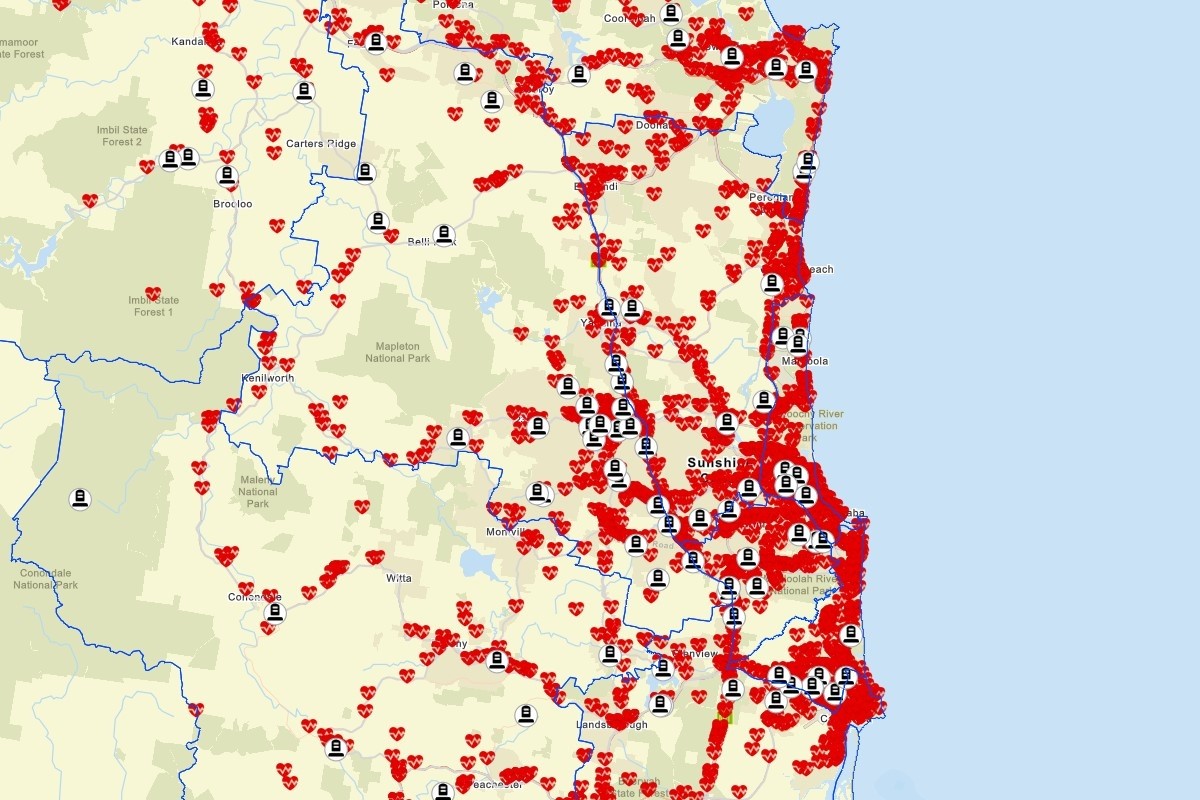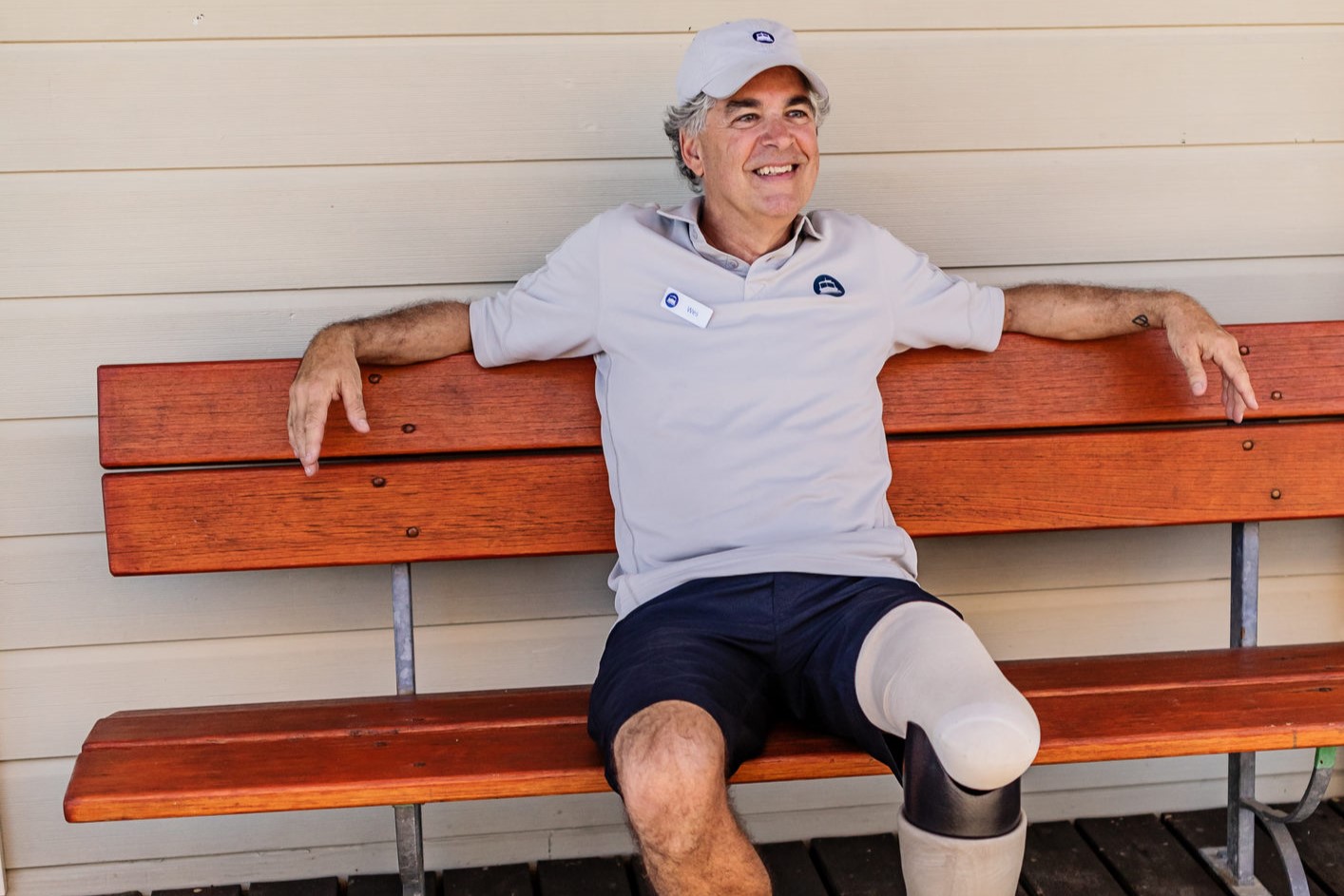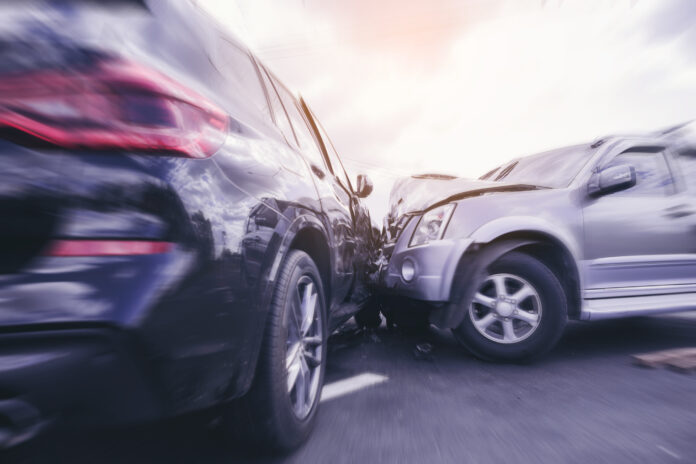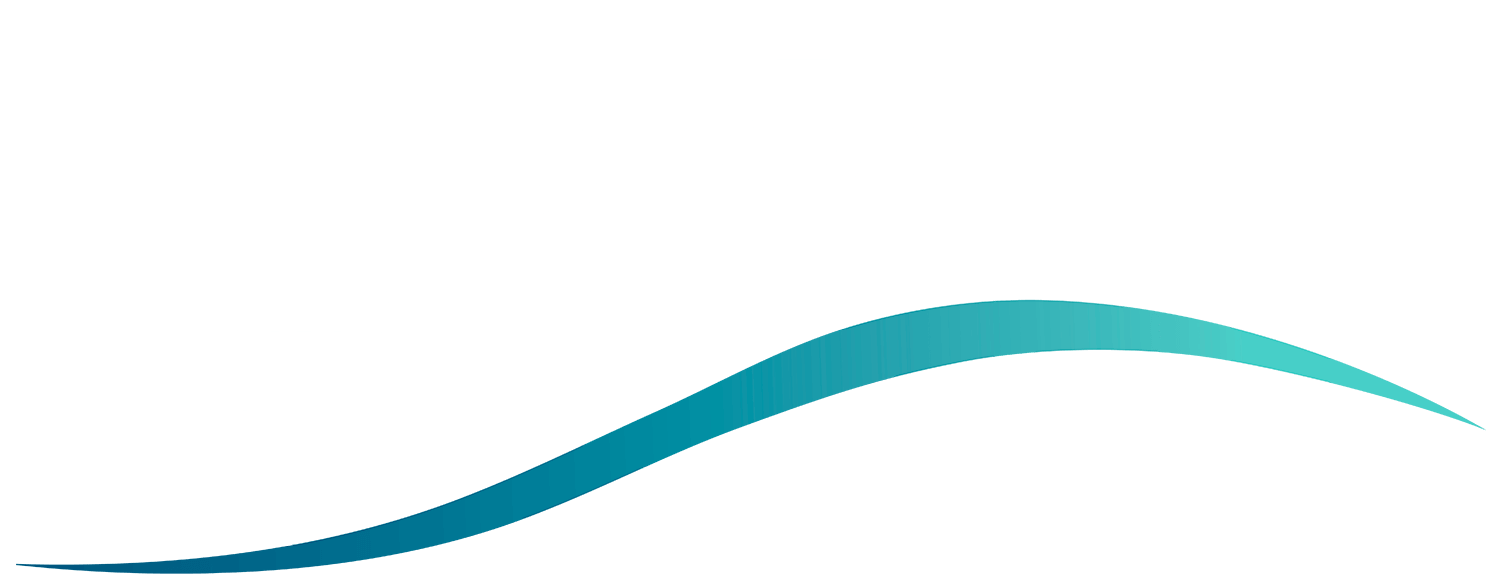A new interactive map shows hundreds of Sunshine Coast crash hotspots, as police and survivors urge motorists to take greater care.
Released by RACQ to coincide with Queensland Road Safety Week, which runs from August 18 to 22, the Road Trauma Map details every crash that caused a death or hospitalisation in the state from 2019 to 2023.
There were 94 fatalities on the Sunshine Coast: 30 in the electorate of Nicklin; 21 in Glass House; 10 in Noosa; seven in Ninderry, Buderim and Maroochydore; and six in Kawana and Caloundra. There were 2171 hospitalisations, with 428 of them in Glass House.
The map includes clusters of crashes on stretches of road and intersections along the Bruce Highway, Sunshine Motorway, Nicklin Way, David Low Way, Caloundra Road, Parklands Boulevard, King Street, Nambour Connection Road, Aerodrome Road, Bradman Avenue and more.
Sunshine Coast District Officer Superintendent Craig Hawkins said road trauma could impact anyone, from learner drivers to experienced motorists.
“I urge you to be familiar with the Fatal Five – speeding, distraction, drink and drug driving, driving tired and not using seatbelts – and do everything in your power to avoid these proven causes of serious traffic crashes,” he said.

Eleven lives have been lost on the Sunshine Coast this year, including a 42-year-old man this month.
“But death isn’t the only outcome of road trauma as we also see people sustain life-altering injuries including spinal damage, traumatic brain injuries and amputations,” he said.
“Your choices on the road could save a life or take one.”
Related story: Intersections with most serious crashes revealed
Noosa local Wes Raddysh is among those impacted by a crash in recent years.
He was on his way to a job interview for his dream role as a skipper with Noosa Ferries when was hit by a car, resulting in the loss of his left leg.
“If I had been a second earlier or later my life wouldn’t have changed but, in that split second, he came straight into my motorbike and, despite only travelling at around 8km/h, the impact was devastating,” he said.
“I spent 38 days in hospital, needed seven operations and still have an ongoing battle with rehabilitation.”

The incident changed his life.
“The isolation is very challenging. I was fit and active and adventurous,” he said.
“Now, I’m in a wheelchair much of the time, stuck in the house not able to do many of the things I used to do, so a lot of people I used to spend time with, I don’t spend time with anymore.
“I am so lucky to be alive and I do see every day as a gift but the dream of having a beautiful property, lots of animals and an active lifestyle here in Noosa is no longer a reality.”
University of the Sunshine Coast Professor Kerry Armstrong said speeding remained the biggest contributor to crashes in Australia.
“But people knowingly engage in this potentially deadly behaviour anyway, so it’s crucial we understand why that is, and what we, police and policymakers, can do to deter it,” she said.
Department of Transport and Main Roads spokesperson Joanna Robinson said road safety was everyone’s responsibility.
“We ask all Queenslanders to think of how they can contribute to safer roads,” she said.
Personal injury lawyer Greg Spinda, of Travis Schultz and Partners, said recent road rule changes – including increased fines and new 40 km/h speed limits in many tourist zones – were welcome steps toward improving safety.
He has witnessed the consequences of behaviours on the roads.
“It seems few drivers remember the successful past campaigns on seatbelts, mobile phone usage and drink driving, and even fewer care for other road users,” he said.
Want more free local news? Follow Sunshine Coast News on Facebook, LinkedIn and Instagram, and sign up for our FREE daily news email.
RACQ managing director and group CEO David Carter said the map and new data exposed the scale of the road toll crisis.
“Over the five years, there were 31,742 crashes (statewide) where people were killed or seriously injured on Queensland roads,” he said.
“It’s clear we have a cultural crisis on our roads. It’s time to get serious on road safety and crack down on dangerous drivers to save lives.”
A TMR spokesperson said the state government was determined to stop the rising road toll, with every life lost “one too many.”
To tackle the problem, the state is investing billions in road safety, including $9 billion for Bruce Highway upgrades and $7.2 billion for transport and road infrastructure in the North Coast region over the next four years. Safety upgrades under the Bruce Highway Targeted Safety Program include wider shoulders, safer intersections, protective barriers and wider centre lines.
The government is also boosting police numbers, rolling out more enforcement cameras and trialling new technologies such as tailgating detection and level crossing cameras. Programs targeting young drivers, repeat drink drivers and vulnerable road users – including a grants program that has already helped more than 2-000 motorbike riders 0 are also underway, alongside education campaigns and partnerships with road safety groups.
Nicklin MP Marty Hunt said it was “very concerning” to have 30 fatalities in the electorate from 2019 to 2023 and he would meet with relevant authorities to help address safety concerns.
Mr Hunt said there were several initiatives – completed, underway and planned – that could make a difference, including intersection upgrades at Woombye and Palmwoods, improvements to the highway and reduced speed limits in some areas.
See the RACQ Queensland Road Trauma map here.





